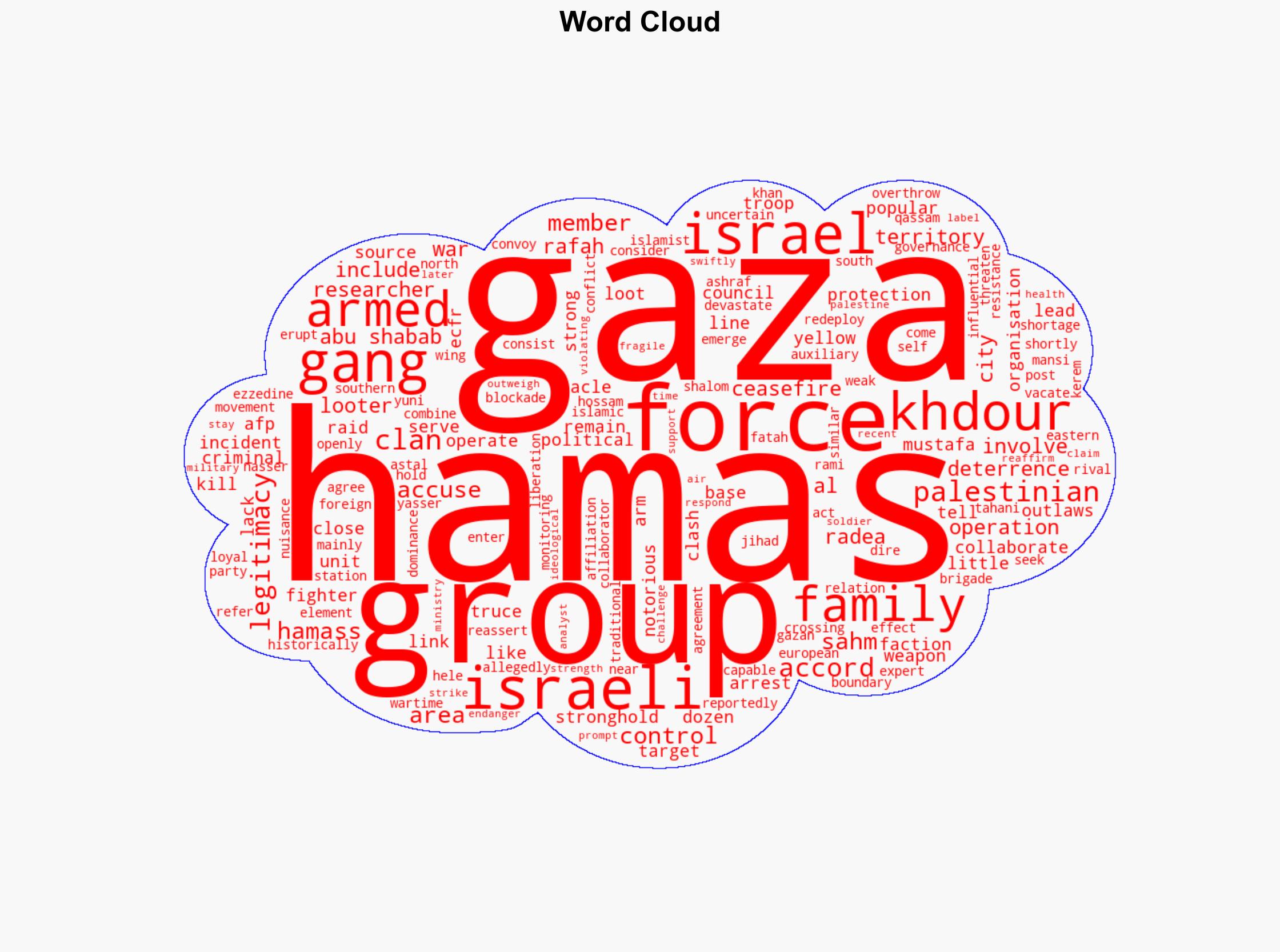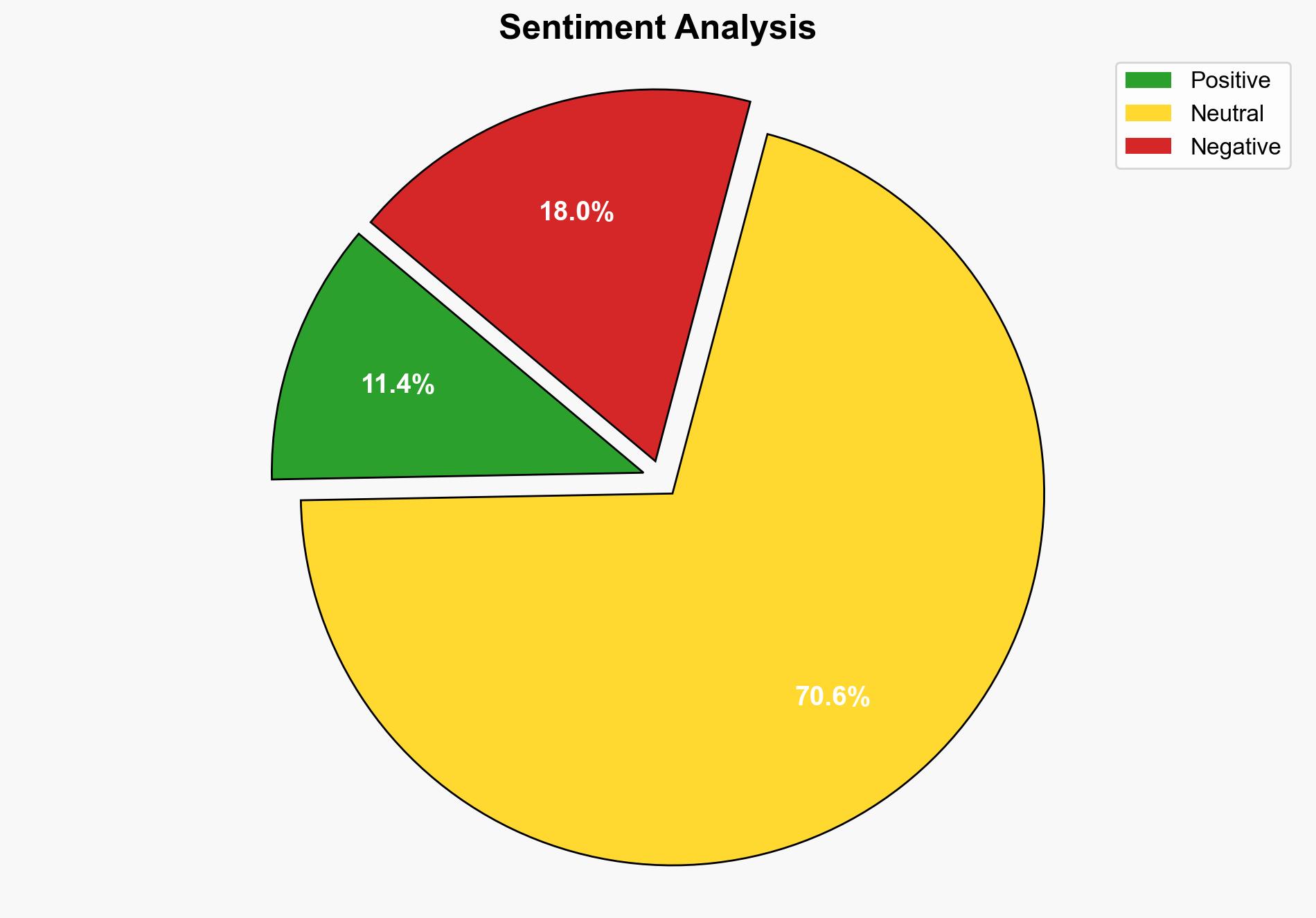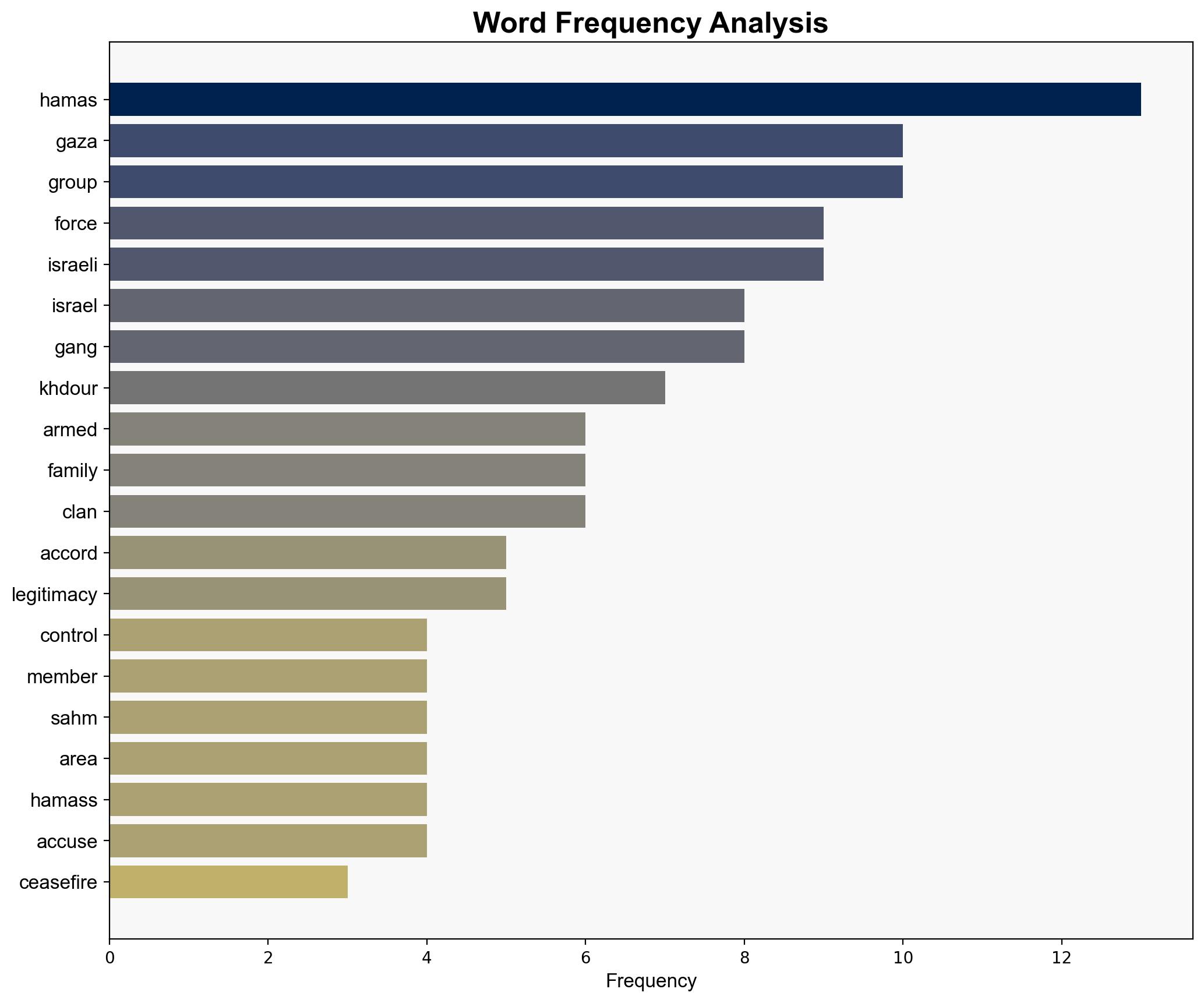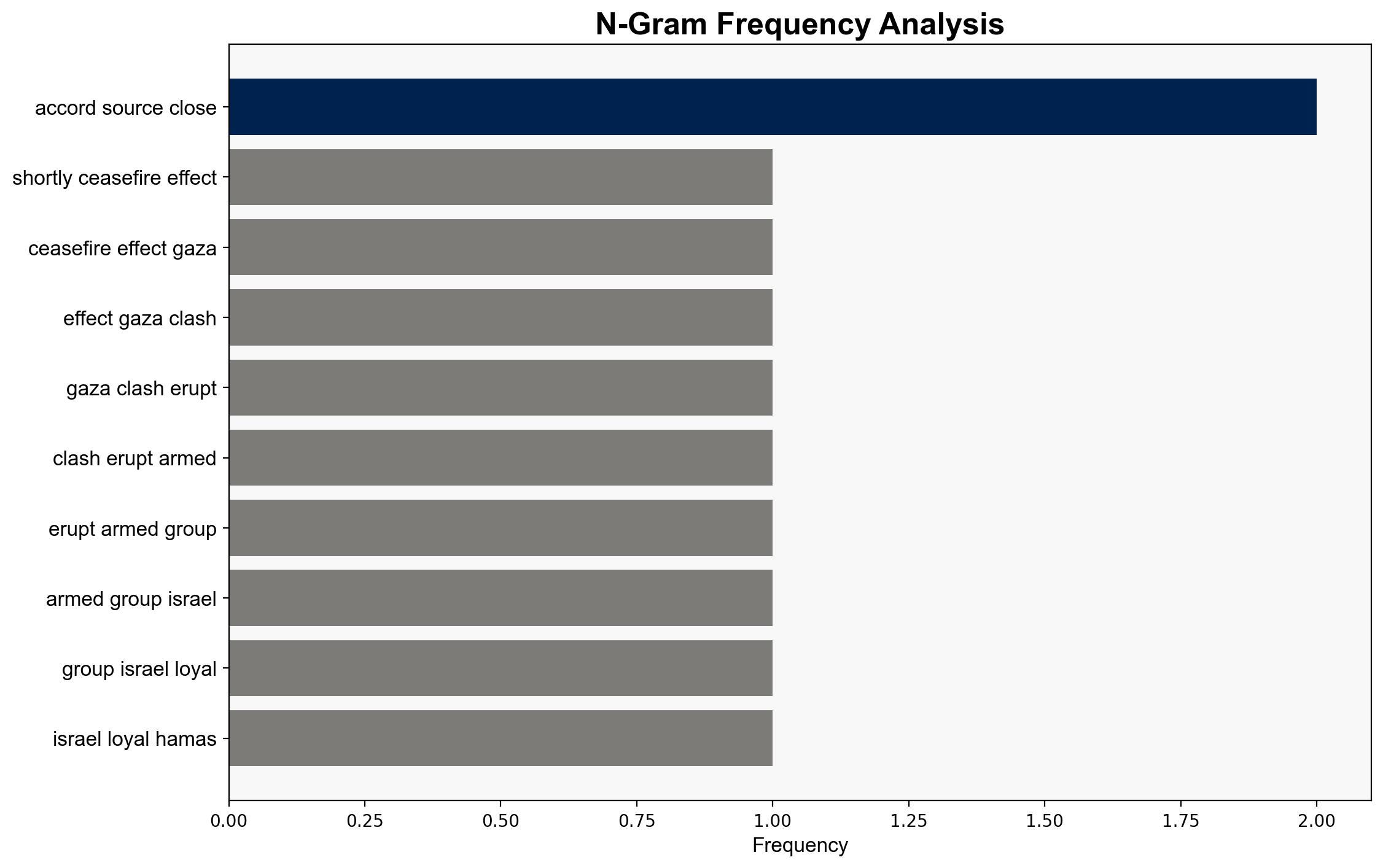The armed groups clashing with Hamas in Gaza – Digital Journal
Published on: 2025-10-25
Intelligence Report: The armed groups clashing with Hamas in Gaza – Digital Journal
1. BLUF (Bottom Line Up Front)
The most supported hypothesis is that the armed groups clashing with Hamas are primarily self-serving entities exploiting the post-conflict environment for personal gain, rather than being significant political or military threats to Hamas. Confidence level: Moderate. Recommended action: Monitor these groups for potential shifts in allegiance or capability that could alter the balance of power in Gaza.
2. Competing Hypotheses
1. **Hypothesis A**: The armed groups are primarily self-serving criminal entities with limited political ambition or capability, exploiting the post-conflict environment for personal gain. This hypothesis is supported by their lack of political affiliation, low legitimacy among Gazans, and focus on looting and collaboration with Israeli forces for protection.
2. **Hypothesis B**: The armed groups represent a coordinated effort to challenge Hamas’s authority in Gaza, potentially backed by external actors such as Israel. This hypothesis is supported by their strategic positioning near Israeli-controlled areas and their involvement in clashes that provoke Israeli military responses.
3. Key Assumptions and Red Flags
– **Assumptions for Hypothesis A**: The groups’ actions are primarily driven by economic incentives rather than political motives. Their collaboration with Israeli forces is opportunistic rather than strategic.
– **Assumptions for Hypothesis B**: The groups have the capability and intent to challenge Hamas’s authority. Their actions are part of a larger strategy involving external actors.
– **Red Flags**: Lack of concrete evidence linking these groups to a coordinated strategy against Hamas. Potential bias in sources describing the groups’ motivations and capabilities.
4. Implications and Strategic Risks
– **Implications**: If Hypothesis A is correct, the primary risk is continued instability and criminal activity in Gaza, which could undermine Hamas’s governance. If Hypothesis B is correct, there is a risk of increased conflict involving external actors, potentially escalating into a broader regional conflict.
– **Strategic Risks**: Economic deterioration due to ongoing instability, potential for increased Israeli military intervention, and erosion of Hamas’s control leading to power vacuums.
5. Recommendations and Outlook
- **Monitor**: Continuously assess the groups’ activities and any shifts in their capabilities or alliances.
- **Engage**: Consider diplomatic channels to address potential external influences exacerbating the conflict.
- **Scenario Projections**:
– **Best Case**: Groups disband or integrate into legitimate political processes, reducing instability.
– **Worst Case**: Escalation into a broader conflict involving multiple regional actors.
– **Most Likely**: Continued low-level conflict and instability, with periodic escalations.
6. Key Individuals and Entities
– Yasser Abu Shabab
– Rami Hele
– Ashraf al Mansi
– Hossam al Astal
– Nasser Khdour
– Tahani Mustafa
– Muhammad Shehada
7. Thematic Tags
national security threats, regional instability, counter-terrorism, geopolitical dynamics





